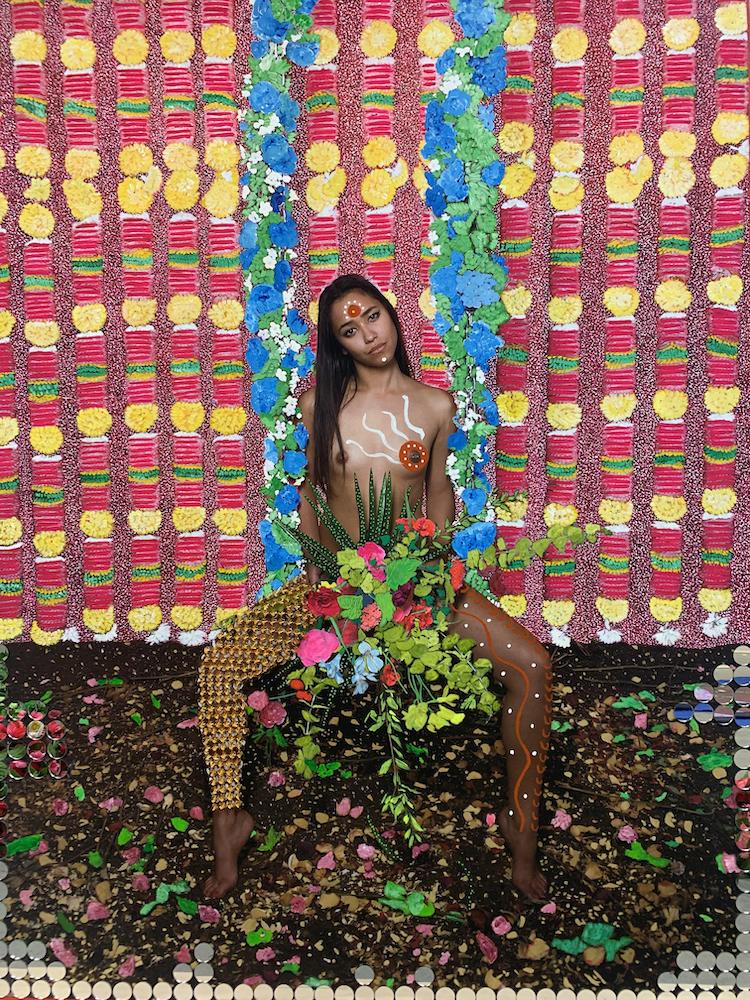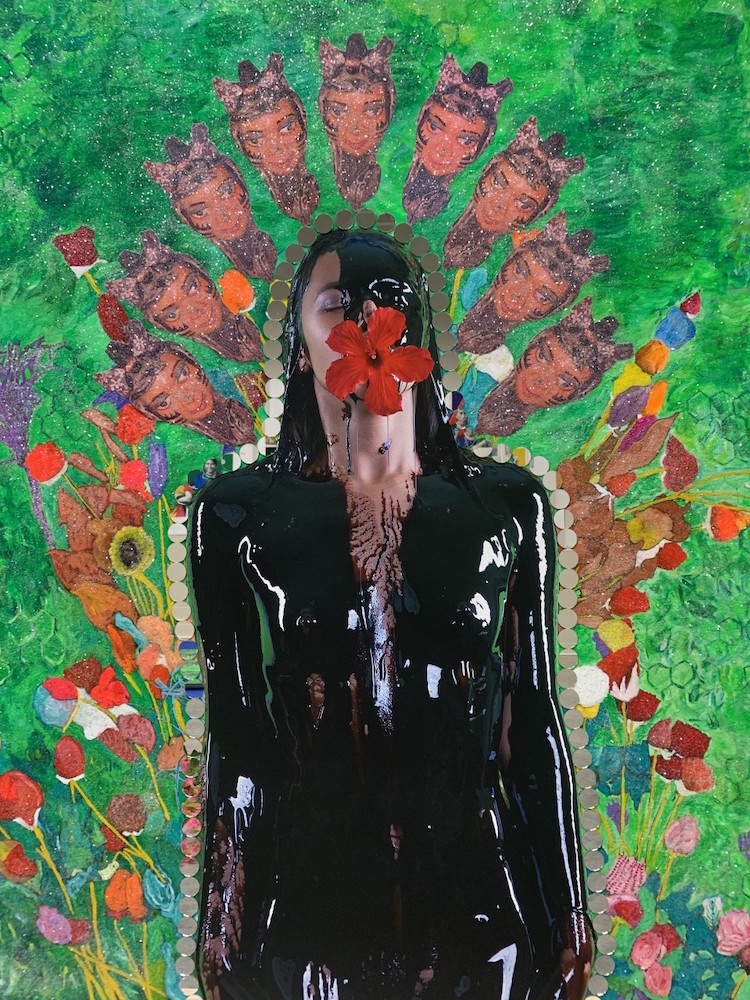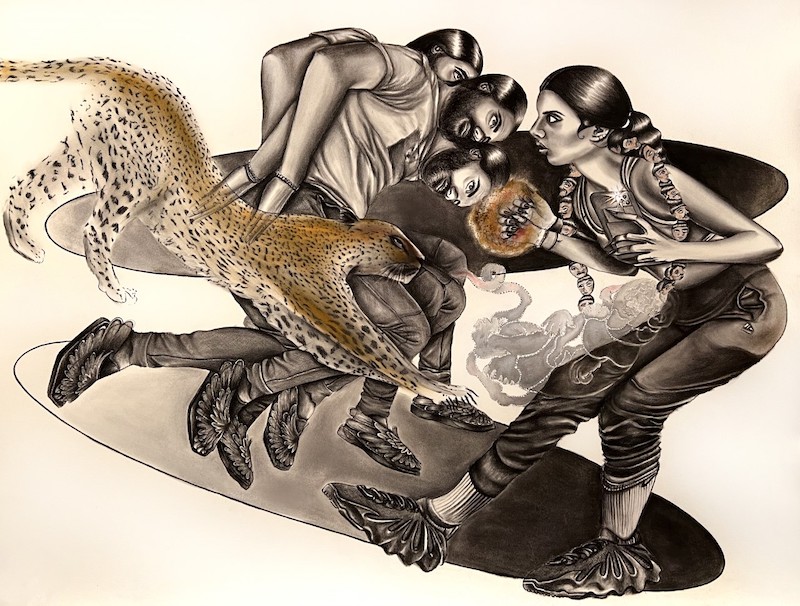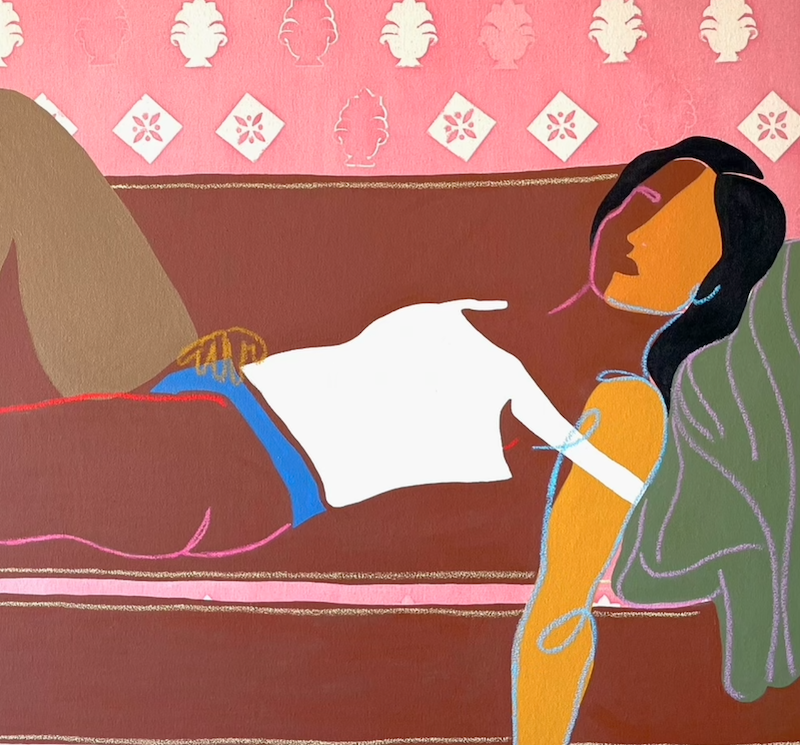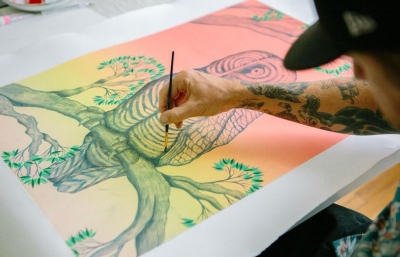Glass Rice is pleased to present Far and Familiar, a group exhibition exploring the double-bind identity of three South Asian-American women. Anoushka Mirchandani, Sanie Bokhari and Renluka Maharaj present their unique perspective on displacement, migration and intimacy through new paintings, illustrations and mixed-media work.
The exhibition opens Saturday, December 11th, 2021 from 5 PM - 7 PM PST at 808 Sutter Street, San Francisco, California. There will be an in-person and online artist talk on Monday, December 13th at the gallery location as well as streamed on their Instagram.
The artists along with co-curator, Sadaf Padder, hail from four different regions of the widely-dispersed diaspora - India, Pakistan, Trinidad-Tobago and Kashmir. In a land that is both familiar and unfamiliar, what are the ways that they materialize memory and establish belonging through the limits of liminality? How, specifically, do first-generation immigrants create and protect a sense of “home” that connects ancestral land to their current place of residence?
In a fine arts landscape that often overlooks South Asian women, this team developed a collaborative rhythm and solidarity by meeting virtually over the last year. To start, the artists and curators read and shared thoughts on Migritude by Shailja Patel. Then they sourced and shared archival family photography to inspire their work. This impact is seen specifically through depictions of clothing, choice color and environmental settings.
For example, Mirchandani incorporates the motif found in her grandmother’s wedding sari into the wall-papered background of a self-portrait painting. This alludes to the ways regional design become incorporated in fast fashion, especially as the styles are adapted in the West. Mirchandani favors mango yellow and orange hues, a loving ode to her favorite homeland fruit. For the first time, she is blending her abstract and figurative styles.
Bokhari continues her style of self-portraiture alongside a recent exploration of smoke and fire in her charcoal illustrations. Her minimal use of color is influenced by her upbringing in Lahore, a city of “grays, beige and browns. Now, it is completely covered in smog that blurs the city.” In Cosmogony, she depicts herself in traditional salwar kameez and clad in Nikes gazing at a ceiling of a grand hall, modeled after Grand Central Station in New York. This connects to the history of constellations in story-telling and mythology as well as the impact of pollution in urban settings like Lahore and New York.
In her large-scale mixed media works, Indo-Caribbean artist Maharaj invokes the divine feminine as protectors of the land, it’s people and culture. She draws from ancient Indian mythology as well as her lived experience and extensive research of the region. The muse in one of her vibrant pieces is Maharaj’s daughter, invoking the power of Sita, a Hindu goddess and daughter of Bhumi, Mother Earth, to protect Trinidad and Tobago’s quickly draining natural sources.
The works bridge past to present. The artists fuse cross-continental influences to establish an identity that exists beyond a multi-hyphenate. At the apex of the exhibit is a photographic and material altar, inviting guests to view the generational progression of the artists’ and curators’ families and environmental and material influences that make them feel at home.



